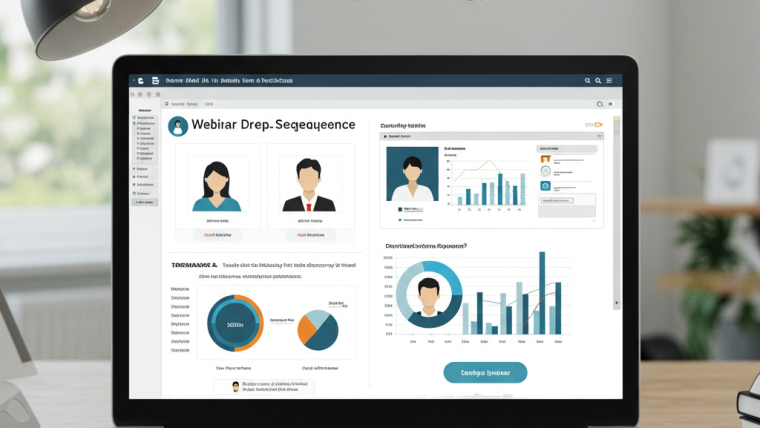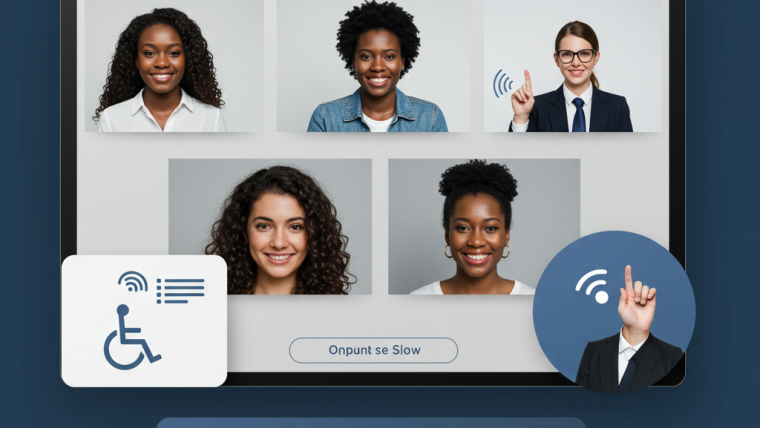Let’s face it – webinars aren’t just another marketing fad. I’ve seen firsthand how they’ve transformed from occasional corporate tools to essential business assets. Last month, my colleague Sarah hosted a well-planned product demo webinar that, thanks to effective webinar planning, generated more qualified leads than their previous three email campaigns combined.
The beauty of webinars? They create that rare space where you can actually talk with your audience, not just at them. Whether you’re across town or across oceans, that real-time connection is gold. But here’s the catch – throwing together some slides and hoping for the best won’t cut it. I’ve watched brilliant people bomb webinars due to poor planning.
I’m sharing what works based on dozens of webinars I’ve run – both the home runs and the strikeouts.
Nail Down Why You’re Really Doing This
Before you do anything else, get brutally honest about what success looks like. I wasted hours on early webinars because I hadn’t defined what “good” looked like.
Ask yourself: What’s the true purpose here? Lead generation? Educating existing customers? Positioning yourself as an industry voice? Soft-launching a new offering?
The difference matters enormously. A webinar aimed at nurturing existing customers looks completely different from one designed to attract fresh prospects.
Write down your specific target: “Convert 25% of attendees to book a demo call” beats vague goals like “increase brand awareness” every time. When I started tracking specific metrics, my webinar effectiveness doubled within three months.
Webinar Planning: Who Are You REALLY Talking To?
I once spent weeks crafting what I thought was the perfect technical webinar—only to discover my audience was primarily beginners who got lost in the first ten minutes. Talk about a gut punch.
This is why audience research is a critical part of webinar planning. Go beyond basic demographics. What keeps your ideal attendee up at night? What have they already tried that failed? What language do they use when describing their challenges?
I recommend calling 3–5 potential audience members before finalizing your topic. These conversations consistently reveal angles I would have missed. During one such call, I discovered IT managers were more concerned about implementation time than features—completely changing my webinar focus.
Finding Your Sweet-Spot Topic and Format
The best webinar topics sit right at the intersection of:
- What you’re genuinely knowledgeable about
- What your audience desperately wants to know
- What naturally leads to your solution (without being salesy)
Format-wise, I’ve found that different goals demand different approaches:
Educational deep-dives work when establishing authority in your field. My most successful educational webinar broke down a complex regulatory change and had attorneys signing up for our legal tech tool without even needing a sales call.
Panel discussions shine when highlighting diverse perspectives. The energy between panelists creates natural engagement no single presenter can match.
Case study formats convert like crazy when prospects are close to deciding. Hearing from actual users overcomes objections better than any sales pitch.
Don’t automatically default to presentation style just because it’s common. Match your format to your specific goals.
The Tech Setup That Won’t Let You Down
I learned about tech selection the hard way after my first webinar crashed 15 minutes in. Nightmare scenario.
Your platform choice impacts everything from registration ease to attendee experience. Key considerations that saved my bacon:
- Does it handle your expected audience size without performance issues?
- Can it integrate with your existing CRM and marketing tools?
- How intuitive is it for first-time users? (Remember, many attendees may be joining their first webinar)
- What engagement features does it offer? (Polls, chat, Q&A, breakout rooms)
Popular options like Zoom, WebEx and GoToWebinar each have distinct strengths. We switched from GoToWebinar to Zoom last year specifically for the breakout room functionality, and our engagement metrics jumped 40%.
Don’t skimp on testing your personal tech setup. A decent external microphone makes an enormous difference – I use a simple Blue Snowball that cost under $70 but sounds worlds better than my laptop mic.
Creating Content People Actually Remember
Here’s an uncomfortable truth: most webinar content is painfully forgettable. I’ve sat through countless presentations that vanished from my memory by the next morning.
The antidote? Make it painfully specific and immediately useful.
When I revamped our onboarding webinar, I replaced generic advice with ultra-specific examples. Instead of “optimize your profile,” we showed before/after screenshots of actual customer profiles with exactly what changed and why.
Structure your content like a compelling story:
- Start with a relatable problem that creates tension
- Introduce a framework for solving it
- Demonstrate the solution with real examples
- Paint the picture of life after implementing your advice
Use the 10-minute rule – every ten minutes, do something to reset attention spans. Ask a question, share a surprising statistic, or tell a relevant story.
The slides themselves? Keep them visual, not text-heavy. My rule: if I could deliver the webinar without slides in an emergency, I’ve prepared properly.
Promotion That Gets Butts in Seats
A fantastic webinar with no attendees is just sad practice. Here’s what consistently works for getting people to actually show up:
Email still drives 60-70% of our registrations. The key is multiple touches with increasing urgency. Our sequence looks like:
- Initial announcement (2-3 weeks before)
- Value-focused reminder (1 week before)
- Final chance + teaser content (day before)
- Live in one hour (day of)
The day-before email with a content teaser consistently gets the highest open and click rates.
Landing page optimization makes a massive difference. When we A/B tested registration pages, the version that outlined specific takeaways (“You’ll learn exactly how to…”) outperformed generic benefit statements by 37%.
Strategic partnerships can transform your attendance numbers. When we co-hosted with a complementary service provider, our registration jumped 3x compared to solo events.
Counter-intuitively, making registration slightly more selective can increase perceived value. Adding “Limited to 100 participants” with a progress bar showing spots filling up increased our conversion rate substantially.
Prepping Your Presenters for Excellence
Even seasoned speakers need proper preparation. The best webinar presenters I’ve worked with all share one quality: they make complex information feel conversational.
If you’re bringing in subject matter experts who don’t present regularly, give them a structured framework. We create speaker briefing docs that include:
- Audience background and knowledge level
- Key questions to address
- Messaging guidelines
- Technical logistics
Run a full dress rehearsal at least 2 days before the event. This gives you time to fix any issues that emerge. When we started doing mandatory run-throughs, our technical glitches dropped by about 80%.
Designate roles clearly – who’s monitoring chat, who’s handling technical issues, who’s introducing speakers. During one particularly rough webinar, we had three people all trying to answer the same technical question while no one noticed the main presenter’s audio had cut out.
Keeping People Engaged When Distractions Are a Click Away
Let’s be honest: your attendees have email, Slack, and probably Netflix just a tab away. Passive presentations lose people within minutes.
Start with a bang. I’ve found that beginning with either a provocative question or a surprising statistic immediately grabs attention. One of our highest-rated webinars opened with: “40% of the processes you’ll demonstrate in today’s hiring interviews will be obsolete within 18 months. Let’s talk about which ones.”
Build interaction points every 5-7 minutes:
- Quick polls keep people actively participating
- Chat activities create community feeling
- Breakout discussions for peer learning
- Direct questions to the audience
We’ve found that acknowledging attendees by name when addressing their questions dramatically increases engagement throughout the session. It signals you’re having a conversation, not just broadcasting.
The Follow-Up That Actually Converts
The hours after your webinar are just as crucial as the event itself. We’ve refined our follow-up process through lots of trial and error:
Segment your follow-up based on engagement level:
- Highly engaged attendees (asked questions, participated in polls)
- Passive attendees (stayed for duration but didn’t interact)
- Registrants who didn’t attend
- Attendees who left early
Each group needs different messaging. Our highest conversion rates come from personalized follow-ups to active participants that reference their specific questions.
The timing matters enormously. Our testing shows that sending the recording within 4 hours of the webinar end performs significantly better than next-day follow-up.
Include clear, singular next steps. When we replaced our generic “let us know if you have questions” with specific calendar booking links, our post-webinar meetings tripled.
Create supplemental resources that expand on frequently asked questions from the session. These pieces of content consistently outperform our regular blog posts because they’re so perfectly targeted.
Understanding how virtual events are reshaping the business landscape can add valuable context as you plan your next webinar.
Measuring What Actually Matters
Webinar metrics can be overwhelming. Focus on these:
- Registration to attendance ratio (industry average is 40-50%)
- Attendee drop-off points (when are people leaving?)
- Engagement rate (percentage who participate via polls, chat, Q&A)
- Conversion to next steps (whatever your specific goal was)
We track a “content relevance score” by analyzing the questions asked – are they basic clarification questions or advanced application questions? The latter indicates your content hit the mark.
Don’t forget the qualitative feedback. Our post-webinar surveys ask specifically: “What’s the one thing you were hoping to learn that we didn’t cover?” This question alone has spawned three of our most successful follow-up webinars.
Turning One Webinar Into an Asset Machine
Smart webinar planners don’t just create one-off events – they build content engines. From a single 60-minute webinar, we typically create:
- A segmented recording of key sections
- A detailed blog post (like this one!)
- Multiple social media highlights
- An FAQ resource
- Email nurture content
One particularly successful technical demo webinar ended up generating 11 distinct pieces of content that continued driving leads for months.
Consider creating a webinar series rather than standalone events. Our retention rate for series registrants averages 74% compared to 35% for one-off sessions.
Remember: a successful webinar isn’t just about the live event – it’s about creating ongoing value that continues working for you long after the broadcast ends.








Webinar Analytics: A Complete Guide to Measuring Success and Improving Performance
The Ultimate Webinar Follow-Up Strategy to Turn Attendees into Customers
Webinar Accessibility Best Practices: How to Make Your Online Events Inclusive for All
Webinar Personalization: Tailoring Content to Audience Segments for Maximum Engagement